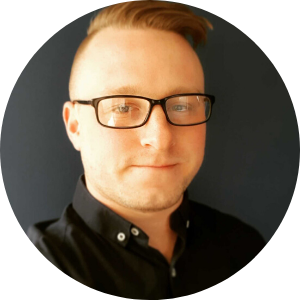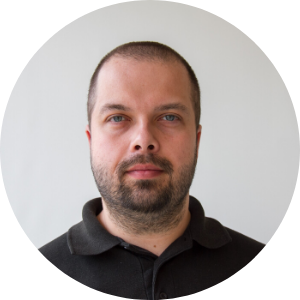Meet Our Azure Experts

Ellis Goodwin
Azure CAF Lead

Piotr Gbyliczek
Azure Platform Engineer

Joe Parr
Azure Platform Engineer

Tim Rohde
Azure Platform Engineer
Tell us a bit about your background
EG: I started in IT as a first line support analyst and after a few years, got into project work. I spent the next couple of years moving between projects and companies, before an opportunity came up to deploy a small public cloud offering. The project quickly snowballed and resulted in the creation of a new Cloud Team, which I led for the next two and a half years.
JP: I fell into an IT apprenticeship after not making the cut for a mechanics apprenticeship. I found my vocation though, as I progressed from a helpdesk role to an internal support role, and finally to managing the internal IT of a business.
PG: I started working with Linux based servers about 25 years ago, and never looked back! In 2006 I came to the UK and landed a job as a First-Line Linux Support Technician at a small IT company. I then progressed through support roles to projects and architect roles.
TR: I started my IT career on the Computer Sciences Corporation helpdesk approximately 11 years ago and worked my way up from desktop support to Infrastructure, then into Cloud.
What does your role involve?
EG: Using my knowledge of Azure and large enterprise cloud adoption to help businesses adopt cloud in the right way for them, whilst still using a scaffold of policies, guidelines and best practice. My role is one of the first of its kind, outside of Microsoft’s own teams.
PG: I work closely with customers, drawing out their vision for a project and providing advice based on my experience. Usually the customer has already decided on the public cloud provider or database they want to use, and we help them get there. That means building reliable, cost-effective environments, automating the build process and connecting it all with CI/CD pipelines.
JP: Supporting the Azure platform, from rolling out infrastructure to migrating legacy applications and a lot of other things!
TR: The same as Joe’s – cloud project work and working to automate deployments and processes.
What’s the biggest lesson you’ve learned in your career?
EG: Never be afraid to ask for help and always be honest. I’ve learned that anything can be fixed and it will only take longer to fix and cause more of a delay if somebody isn’t honest.
PG: I agree with Ellis. There’s always somebody who can fix what’s broken and help you gain knowledge. You need to know your team and find people you can depend on – to help you find that ‘somebody’ quicker.
JP: To add to that, I’d say don’t just admit to your mistakes, learn from them.
TR: You always need to be bettering yourself with training, whether that’s certifications or developing your soft skills. Always keep learning!
How do you define a job well done?
EG: When you’ve listened to the requirements of the person giving you the job, defined clear objectives, made suggestions and agreed on them before you start working. It’s easier to manage expectations this way.
PG: When I’m satisfied with what I’ve implemented and I’ve delivered a solution that the customer is happy with and confident to use on his own.
JP: When everybody involved in the process is happy.
TR: And also when a customer wants you working for them again.
What is your favourite tool to script Azure automation?
EG: Terraform, as it’s super powerful and is very easily manipulated to reuse the same code to deploy multiple environments, with just tweaks of variables.
PG: Ansible and Az CLI. Ansible is just super simple, clear and powerful thanks to its usage of YAML for playbook definitions. Az CLI is a go-to tool for anything that may not be fully supported by Ansible Azure modules yet, or that’s too hard to use via an azure_rm_resource module.
JP: Currently it’s PowerShell. However, after starting to learn Terraform, that could overtake PowerShell!
TR: I’m with Ellis – Terraform.
What’s the biggest innovation you’ve seen in the industry?
EG: PaaS technology in the cloud. The ability to just deploy and use a full service and it be so configurable (yet still managed in all the right places) really changed my opinion on how the industry should work.
PG: Containers. Docker, Kubernetes and initiatives like RedHat’s OpenShift are behind the biggest shift in the IT industry. Cloud changed the way infrastructure is deployed and budgeted, but it was containers that really changed the way we think about what that infrastructure will be used for, and how to make it more efficient.
JP: Definitely the movement into the cloud.
TR: Agreed – cloud hosting.
If you had to predict something for the future of the industry, what would it be?
EG: When quantum computing is finally stable and becomes available to the consumer, it will result in a technological jump greater than we’ve ever seen before. The difference in speed of calculation between our current architectures and quantum computing means that we’ll be able to calculate things in minutes that would normally take years.
PG: I often think of William Gibson, father of cyberpunk, who wrote Johnny Mnemonic, a story about a human storing megabytes of sensitive information in his brain. We are past the storage mark, but not yet at the point of storing anything in the brain. I think the future will be next disrupted when AI meets biotechnology, when we’re able to run AI/ML workloads in the human brain. We’ll have to resolve the moral side of it first, though.
JP: In the more immediate future, there will be a surge of movement into the cloud, as businesses widely adopt cloud computing.
TR: Yes and I think we’ll see businesses of all sizes – from huge corporations to start-ups – continue to move to the cloud.
Whatever stage you’re at in your Azure journey, our experts are here to help. Find out how we can help with our Azure Service Tiles.
Further Insights
Find out about the Azure Service Tiles
Our Azure Service tiles are a best-practice, accelerated approach to Azure adoption in-line with Microsoft’s Cloud Adoption Framework (CAF).
The Beginner’s Guide to Microsoft’s CAF
Interested in Microsoft’s Cloud Adoption Framework (CAF) but unsure where to start? Have a read of our introductory blog.
How Not to Screw Up Your Move to Azure
A deep dive into our experience of delivering hundreds of cloud migration projects, including lessons learned and must-do activities.

Rachael Lubinski
Content Manager
Rachael works with technical experts and the marketing team to deliver great content to our readers! Whether it’s a blog, guide or e-newsletter, she’s usually involved in some way in briefing, editing or writing.
She moved into IT from the Engineering industry and before that was in academic publishing - bringing with her a love of writing.
Get to know more about Rachael here.



